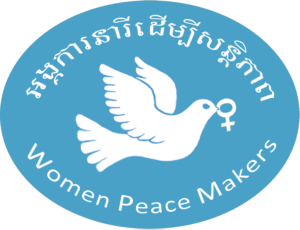Our Peace & Conflict Transformation Program is made up of diverse initiatives focusing on conflict analysis, prevention, management, resolution, and transformation through various interactive and creative approaches. Peacebuilding tools, such as mediation, nonviolence communication, qualitative research, and conflict transformation workshops are important components in our interventions. Gender elements are also always included and specific gender lenses may also be incorporated, leveraging on the knowledge and resources of our gender work. With an overarching vision of the principles of negative and positive peace and Sustainable Development Goal 16 to promote peace and inclusive societies for sustainable development, provide access to justice for all and build effective, accountable and inclusive institutions at all levels, our Peace & Conflict Transformation Program works to positively transform conflict at any level.
Promoting Nonviolence in Addressing Conflict
We believe there is always a nonviolence way to all violent conflict situations. Nonviolence begins with the choice to reject violence as a means to an end. In contemporary Cambodia context of social conflicts, however, violence remains the last, if not the first, resort to resolving conflict and thus effective and sustainable resolutions have been few. Violence will always breed violence. In the case of protracted land conflict, for example, where women and children suffer the most, the villagers have learned their hard lesson that being violent will not bring them anywhere far to a long-term solution. We thus train the community leaders and members in various strategies, including art, of active nonviolence to better express themselves, dialogue and demand for their human rights nonviolently. Another important element of the program is that we work to plant the seed of nonviolence as a way of life and not just a method to struggle for land right justice. Also, together with our alumni, we continue to contribute to building more local resources on nonviolence communication (NVC) through translation of relevant resources for public use and mobilizing community of NVC practices.
Promoting Inter-ethnic harmony
Ethnically speaking, Cambodia is a diverse country. Though 90% of the population is predominately Khmer, 10% of the population is made up of a rich mix of both indigenous and non-indigenous ethnic minorities. Through our work on conflict and violence, we have heard from specific ethnic communities who experience anti-sentiment or discrimination based on their ethnic identity. We have also learned that different ethnic communities face different contexts and have unique needs. Within this scope, we have committed to better understand how conflict and violence affect groups such as the ethnic Vietnamese, the Cham Muslims, and the indigenous, for example. We are employing an adapted version of Facilitative Listening Design, a conflict transformational research tool to better understand and talk about difficult issues in our society. As we continue to work to understand deeper protracted social conflicts, we use our findings to better inform our work and develop more relevant and creative approaches to confront and transform interethnic conflict in Cambodia.

